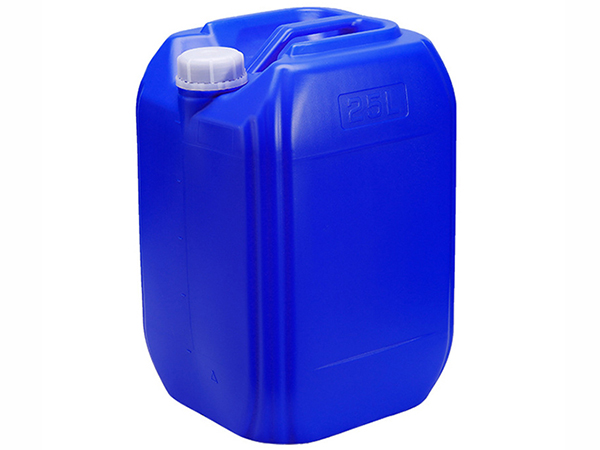
1. Desizing:
At present, most denim is softened by cellulase rinsing. In the production of denim, no matter how thick or thin it is, the warp yarn will be coated with a kind of corn starch slurry during the weaving process to improve the stiffness of the yarn. During desizing, cellulase can decompose the size on denim and make the size peel off. Although desizing will slightly fade denim, it will improve the softness and drapability of denim. The light denim after desizing can be made into tablecloth or napkin cloth with soft hand and good drape
2. Stone mill washing:
Stone mill washingis to fade denim through physical methods and increase color contrast effect. Put a roll of cloth 20 yards long and 62 inches wide into a 250 pound washing tank with pumice for stone mill washing treatment (the best washing effect is when the tank capacity is 35%) 。 In the washing tank, denim and stone are mixed and tumbled, rubbing against each other. The rolling time determines the color depth of denim after washing. The longer the washing time is, the lighter the color is, and the stronger the color contrast effect is. Denim is washed and then rinsed, softened and dried. The denim after stone mill washing is soft and has rich color layers, becoming the fashion preferred fabric for home textile and clothing industries
3. Enzyme washing:
Enzymes, like enzymes, can be used to degrade cellulose in cotton fibers. Because the color of denim is actually attached to the outer layer of yarn, afterEnzymatic washing water, the fiber and the indigo dye attached to it can be washed off together. When the desired color is obtained, the enzyme washing water can be stopped by changing the alkalinity of the water or increasing the water temperature. Then the next step of rinsing and softening treatment can be carried out. Enzymatic washing is more gentle than stone mill washing, because no sharp stones are used in the process of enzyme washing. The denim cloth washed by enzyme washing has uniform color and soft feel Suitable for home textiles and clothing
4. Stone grinding and fermentation washing:
In the process of finishing, pumice and enzyme are used together to make denim nostalgic. In the first step, only pumice and fabric are added to the washing tank, and then in the next step, enzymes are added and rolled together with the pumice and fabric until a natural nostalgic effect is produced. The most common method of washing is blue denim
5. Sand washing:
The finishing process uses a row of horizontally placed rollers, which can be wrapped with sandpaper or chemically treated abrasives. Denim is sleeved on the drum, and the protruding part is sanded. This finishing method will make denim partially fade, and produce velvet on the surface of denim, giving it a soft and delicate feel. The sand washing treatment method can also create fashionable appearance effects such as wrinkles and cat whiskers for denim
Finalization and organization:
For denim fabrics, it is feasible and necessary to use several finishing methods simultaneously. Since denim dyes are attached to the yarn surface, preventing other fabrics from being dyed by denim is a problem that manufacturers must solve. Resin and color fixing agent can avoid the problem of friction fading, especially suitable for denim with darker color. In addition, waterproof treatment can also help prevent fading issues during home decoration and external wear
6. Rinsing:
To give clothing a clean white or bright appearance and a soft feel, it is necessary to rinse the clothing. After ordinary washing with water, the temperature should be raised to about 60 ℃, and an appropriate amount of bleach (sodium hypochlorite solution) should be added to rinse for a certain period of time according to the depth of the bleach color, and the board should be consistent. The bleaching of the clothes is completed, and the residual chlorine in the water is neutralized by adding sea waves to completely stop the bleaching. After waiting for clear water, add detergent, fluorescent whitening agent, hydrogen peroxide, etc. to a water temperature of 50 ℃ for final washing to neutralize the pH value and fluorescent whitening, etc. Finally, perform a softening treatment. It should be noted that during operation, the direction of adding bleach should be consistent with the direction of the rotating cylinder to avoid dilution of bleach. Rinsing can be divided into itching and chlorine bleaching. Oxygen bleaching is the use of hydrogen peroxide for bleaching, and generally the surface of the bleach will turn slightly red. Chlorine bleaching refers to the use of sodium hypochlorite for bleaching. The fading effect of chlorine bleaching is rough, and it is used for rinsing indigo denim
7. Coloring:
Denim often needs to be dyed with dyes such as reducing, vulcanizing, reactive, and direct dyes. Fuel and sulfur dyes cannot be dyed using industrial water washing machines, and can only be done in specific dyeing tanks, which has certain difficulty requirements for operation, so they are currently rarely used; Reactive dye dyeing often uses low-temperature dyes for one bath dyeing, but it must be thoroughly washed to neutral and dried in a timely manner to avoid defects such as sealing; At present, direct dye dyeing is commonly used in mid to low end clothing, with a relatively simple process but unsatisfactory color fastness. It is also mentioned here that "blue patterned cloth" provides the effect of "blue patterned cloth" by washing after making clothing
8. Dry grinding:
Also known as a stone mill, it uses a specialized frying machine, resembling a water washing machine that only uses a rotating cage without a shell. The principle is to place the pumice in a frying machine, pour in diluted bleach water (sodium hypochlorite solution), rotate it to make the pumice absorb evenly, and then put it into denim clothing for rotation. Through the mutual friction between the pumice, clothing, and machine walls, the dye on the clothing surface is partially ground off. At the same time, the ash generated by the pumice is stained with the clothing surface, and the bleach water contained in the ash seed damages the indigo or sulfide dye on the clothing through oxidation, It has a certain stripping and bleaching effect
The specific operation is as follows: place the pumice and rubber balls in a frying machine, pour in diluted float water, rotate for a few minutes to make the pumice absorb evenly → put in denim clothing, grind for about 20 minutes → take out an object and wash off the ash on the clothes with clean water in the washing machine → change water and add Haibo dechlorination → change water and add caustic soda, whitening agent, etc. to remove yellowing and brightening → wash with water → use softener
9. Stir fried flowers:
Also known as snowflakes, similar to dry grinding, it is also done using a frying machine. Compared to dry grinding, the white Baidu is whiter, with a large contrast in color, but not as evenly white as dry grinding blue grinding. It is named after the fact that the white area of clothing is like a large snowflake covered with clothes and fried with snowflakes. The principle is to soak dry clothing in potassium permanganate solution, and then directly polish it with clothing in a dedicated frying machine rotating cylinder. Through the strong oxidation effect of potassium permanganate solution emitted from pumice, some indigo blue pigments are eliminated. In addition, potassium permanganate solution is infiltrated into the clothing using pumice and its ash powder as the medium, forming white spots resembling snowflakes through strong oxidation
The operation is as follows: Soak the pumice in potassium permanganate solution for 1-2 hours, remove and drain for later use → Pour the drained pumice and rubber balls into the frying machine, put them into denim clothing, grind for about 20 minutes → Snowflake effect on the board → Take out the clothes and wash them with clean water in the washing machine → Neutralize with oxalic acid to remove yellow spots → Wash with water → Use softener
10. Machine wiping:
Use an electric brush or grinding wheel to directly polish the surface of the fabric, achieving a localized whitening effect on the surface of the clothing, suitable for large areas such as the front legs, knees, and rear buttocks. This process usually involves using a pants blowing machine (such as an upright pants grinding machine) to inflate and fix the pants using an inflatable model called "glue wave". Then use electric equipment to polish, and finally manually trim small parts such as the edge of the pants seam, the pocket opening, and the hem of the pants to achieve a special effect
11. Hand wipe:
Also known as hand rubbing, it is relative to machine rubbing. Common methods include hand brushing, sandpaper rubbing, and knife rubbing, which later became synonymous with many small techniques. For example, ordinary cat whiskers are a type of hand rubbing that is simply ground into the shape of cat whiskers through mechanical equipment. Hand wiping refers to the process of physically damaging and discoloring fibers on the surface of clothing using tools such as sandpaper, blades, and small sanders
12. Cat whiskers:
Obtained from the shape of a cat's whisker after processing. Another reason for this is because there are various processes involved in this part, which can be obtained by grinding and washing after sewing needles, rubbing with monkeys after sewing needles, or directly grinding with grinding wheels. There are various opinions on the shape and clarity of cat whiskers, but there are no standardized standards. Recently, it has been combined with three-dimensional wrinkling of tree fat and rubbing with monkeys to obtain three-dimensional cat whiskers, which can be divided into flat cat whiskers and round cat whiskers. Due to the popularity of three-dimensional cat whiskers, the commonly used processes are listed below for colleagues to refer to: clothing after desizing and grinding (previously, clothing that has not been directly desized directly entered the next process) → spraying or wiping resin solution (or soaking solution → dehydration → drying) → iron bucket wrinkle scratching (round cat whiskers are iron cylinder wrinkle scratching) → oven → monkey → other water washing processes
13. Resin Crease:
As mentioned in the previous paragraph, the principle is the same as iron-free finishing, with the aim of forming long-lasting and specific wrinkles according to processing requirements. It is combined with techniques such as grinding, sandblasting, and hand wiping to express style. The operating process can refer to the three-dimensional cat whisker process, and the main requirements for the process are: three-dimensional shape preservation and durability; Good strength retention; No monkey macula; Formaldehyde residue can meet the national standard requirements; Try not to flood the background color
14. Sandblasting:
Also known as sanding, it is powered by compressed air and uses a dedicated spray cylinder to spray emery onto the surface of jeans at high speed. The polishing effect of emery is used to form the effect of wear and fading on the clothing surface. Diamond sand can be recycled and added to the sand cylinder for further use. The working environment for sandblasting is relatively harsh, and operators need a complete set of dust prevention equipment
15. Spray Monkey:
The effect is similar to sandblasting, but the former relies on chemical reactions while the latter relies on physical damage. Monkey spray is the process of using a spray gun to spray monkey water (a mixture of potassium permanganate and phosphoric acid) onto clothing according to design requirements, and sometimes even using templates to achieve more exquisite artistic patterns. The oxidation action of the monkey destroys the indigo dye or high-quality sulfide dye on the surface of denim clothing, and the color of the dye is faded. Potassium permanganate reflects the product manganese dioxide (brown/orange), which is removed by subsequent reducing agents such as oxalic acid and sodium bisulfite through washing. The clothing surface of the monkey water has a frost whitening effect, which is called monkey water. The degree of fading and whitening effect is controlled by the concentration and spray amount of bay. Compared to hand wiping, sandblasting and other processes, the color fading of the monkey is more uniform and stronger, and there is basically no physical damage to the clothing
16. Laser engraving:
The initial method of forming a trademark or pattern on jeans is to attach the cut pattern to the pants, wash it with water, and then tear off the pattern. At this point, the jeans naturally leave an unwashed pattern outline. Some designers also directly carve various floral patterns on jeans. Nowadays, laser machines can easily remove the blue color floating on the surface of the yarn, carve special patterns on the fabric, and also cut various patterns with hollowed out effects on the fabric surface, making the finished product more exquisite and creative
17. Elephant pattern:
Also known as "ice cracking", strictly speaking, it belongs to the category of monkeys. However, there is a trend of popular development in the current market for this process, so it is specifically discussed. The core of this process is the use of "burst slurry". The production method is to manually scrape the burst slurry with a certain thickness on the surface of cattle clothing, and then dry the clothing (usually in the oven). After drying, the burst slurry on the surface of the clothing will form various natural cracks, Then, the clothing is sprayed with monkeys, which penetrate into the cracks and react with the clothing dye. Then, the slurry is washed to remove and neutralized, resulting in a white pattern on the surface of the clothing that is consistent with the cracks, known as explosive or ice cracks
18. Other:
There are also endless techniques and techniques such as grinding, puncturing, hand needle folding and washing, hand painting, tie dyeing, and cutting

About
Brief introduction Application Certificate Laboratory Connectproduct
Post finishing agent Enzymatic water Brightener Printing/Coating Additives MoreNews
Dynamic Lnformation Common
Mobile website

TRL:+86 0769-88124837
Chinese mailbox:dgtshdrl@163.com
English mailbox:postmaster@tianshengchem.com
Guangdong Tiansheng Environmental Protection New Material Technology Co., Ltd. Copyright © 2023 all rights reserved